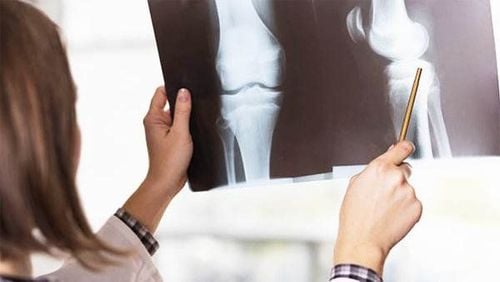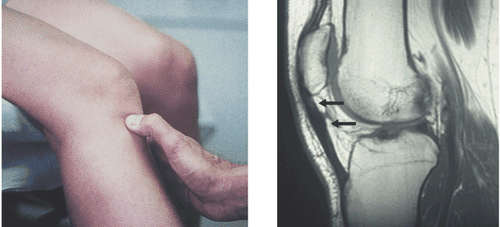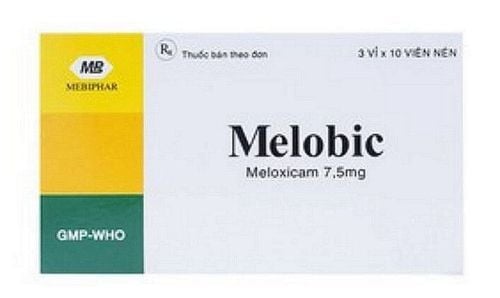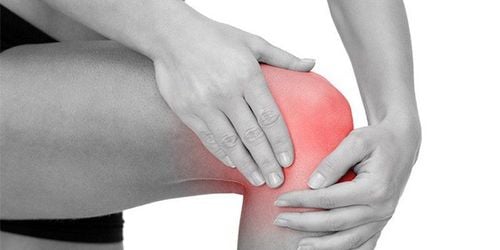This is an automatically translated article.
Congenital patellar dislocation is often accompanied by structural abnormalities of the bones and tendons of the knee. The patient was indicated to perform kneecap surgery to effectively treat this condition.
1. What are the consequences of a dislocated kneecap?
The kneecap is considered the largest sesamoid bone in the body, located in the knee area. It belongs to the extensor system of the knee, is the clavicle fulcrum of the quadriceps, and is the brake of the knee. The kneecap is involved in the movement of the knee joint, is a protective component of the knee joint (because the kneecap is located on the front of the knee joint).
Dislocation of the patella (the kneecap is displaced) is a condition where long-term consequences can lead to rupture of the patellar ligament, patellar-femur arthritis, or flattening of the lateral epicondyle. Clinically, it is not difficult to identify patellar luxation. However, determining the cause in each case of patellar dislocation is relatively difficult.
2. Surgical method for dislocated kneecap
2.1 Indications and contraindications
Indications to perform surgery for cases diagnosed with kneecap dislocation. Contraindicated for cases that are contraindicated in general surgery.
2.2 Preparation
Personnel performing: The surgeon is an orthopedic specialist; Patients: Doctors fully explain the surgical procedure, surgical purposes, complications or complications that may occur during and after surgery (complications due to anesthesia, anesthesia). Patients are also required to fast for 6 hours before surgery; Technical facilities: Major surgery kits; Medical records: Prepare all kinds of papers in accordance with regulations; Estimated surgery time: 90 minutes.

Phẫu thuật xương bánh chè cần được chẩn đoán và có các phương tiện kỹ thuật cần thiết
2.3 Performing surgery
Patient position: Lie on your back with a pillow under the patient's kneecap; Anesthesia: Perform sacroiliac or endotracheal anesthesia; Skin incision, weight along the front of the knee - outside the thigh. Next, extend past the lateral surface of the knee, round to the anterior tibial tubercle; Exposing quadriceps, patella (2 inner and outer patella); Cut the inner patella, peel off the fibrous capsule about 1.5cm wide into an orange shape; Dissect the adhesion space between the lateral patella and the extra ligament. Then, cut, dissect, expand the 2 outer patellar edges; Move up to handle quadriceps muscle mass, depending on the condition of the quadriceps muscle injury to choose the appropriate technique. After separating the area of fibromyalgia, the doctor performs a "knee flexion" maneuver, pre-releasing the more tense muscles. Consistently perform this maneuver, separate the muscles until the knee is 120° flexed, then stop. For rectus femoris muscle, cut about 1.5 - 2cm from the upper border of the kneecap. The quadriceps reconstruction can be performed according to Payer E, Thompson; Gradually flex the knee joint, gently push the kneecap to slide from the outside to the inside so that the kneecap moves smoothly between the 2 condyles of the thigh, returning to the normal anatomical position; Sew the 2 edges of the medial patellar incision (narrow the medial patella). This move will widen the 2 edges of the outer patella; The suture transfers the medial broad muscle to the superior patellar border; Suture the incision and a sterile dressing; 60° flexed knee shin splint.
2.4 Follow-up after surgery
After kneecap surgery, if the patient experiences the following complications, it should be handled immediately:
Hematoma and postoperative edema: Need to take hematoma and compress; Post-operative infection: The incision should be separated, cleaned and left open; Rehabilitation after surgery in a positive way for the patient. Dislocation of the kneecap can lead to osteoarthritis, limiting the patient's daily activities. Therefore, the patient needs to be surgically treated for patellar dislocation. Before, during and after the surgery, the patient should strictly follow all the doctor's instructions to avoid the postoperative sequelae of the kneecap surgery.
Please dial HOTLINE for more information or register for an appointment HERE. Download MyVinmec app to make appointments faster and to manage your bookings easily.













